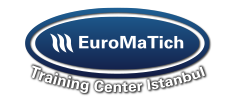Overview:
Introduction:
This training program equips participants with the knowledge and skills necessary to ensure a safe and healthy work environment. It allows them to cultivate a safety-oriented culture within organizations while empowering individuals to proactively manage health and safety concerns.
Program Objectives:
At the end of this program, participants will be able to:
- Define the sources of harmful acts.
- Understand and embrace the concept that safety is a collective responsibility.
- Recognize that accidental injuries stem from unsafe acts, behaviors, and conditions.
- Conduct job safety analysis and provide clear job safety instructions.
- Perform accident investigations proficiently and complete comprehensive accident reports.
- Effectively manage and respond to a variety of workplace accidents and emergencies.
Targeted Audience:
- Supervisors, managers, and team leaders responsible for overseeing workplace health and safety.
- Human resources professionals involved in developing and implementing health and safety policies.
- Health and safety officers, coordinators, or representatives tasked with ensuring compliance with regulations.
- Employees at all levels seeking to enhance their understanding of health and safety principles and practices.
- Individuals involved in risk management, incident investigation, and safety culture promotion within their organizations.
Program Outlines:
Unit 1:
Introduction to Health and Safety Management:
- Understanding the legal framework and regulations governing workplace health and safety.
- Identifying roles and responsibilities of employers, employees, and regulatory bodies.
- Recognizing the importance of a proactive approach to health and safety management.
- Exploring the benefits of integrating health and safety into organizational culture.
- Overview of common workplace hazards and their potential impacts.
Unit 2: Risk Assessment and Hazard Identification:
- Conducting thorough risk assessments to identify potential hazards in the workplace.
- Utilizing various risk assessment methods and tools effectively.
- Prioritizing risks based on severity and likelihood of occurrence.
- Implementing controls and mitigation measures to reduce identified risks.
- Regular review and reassessment of risk management strategies.
Unit 3:
Incident Investigation and Root Cause Analysis:
- Understanding the importance of investigating incidents and near misses.
- Developing skills in conducting thorough incident investigations.
- Applying root cause analysis techniques to identify underlying causes of incidents.
- Implementing corrective and preventive actions to address root causes.
- Utilizing incident investigation findings to improve health and safety practices.
Unit 4:
Safety Culture and Communication:
- Promoting a positive safety culture within the organization.
- Recognizing the role of leadership in shaping safety attitudes and behaviors.
- Effective communication strategies for disseminating health and safety information.
- Encouraging employee involvement and engagement in safety initiatives.
- Addressing barriers to effective communication and fostering open dialogue.
Unit 5:
Health and Safety Management Systems:
- Understanding the components of an effective health and safety management system.
- Implementing policies, procedures, and protocols to support safety objectives.
- Utilizing performance indicators and metrics to measure safety performance.
- Conducting regular audits and inspections to assess compliance and effectiveness.
- Continuously improving health and safety management systems based on feedback and lessons learned.


